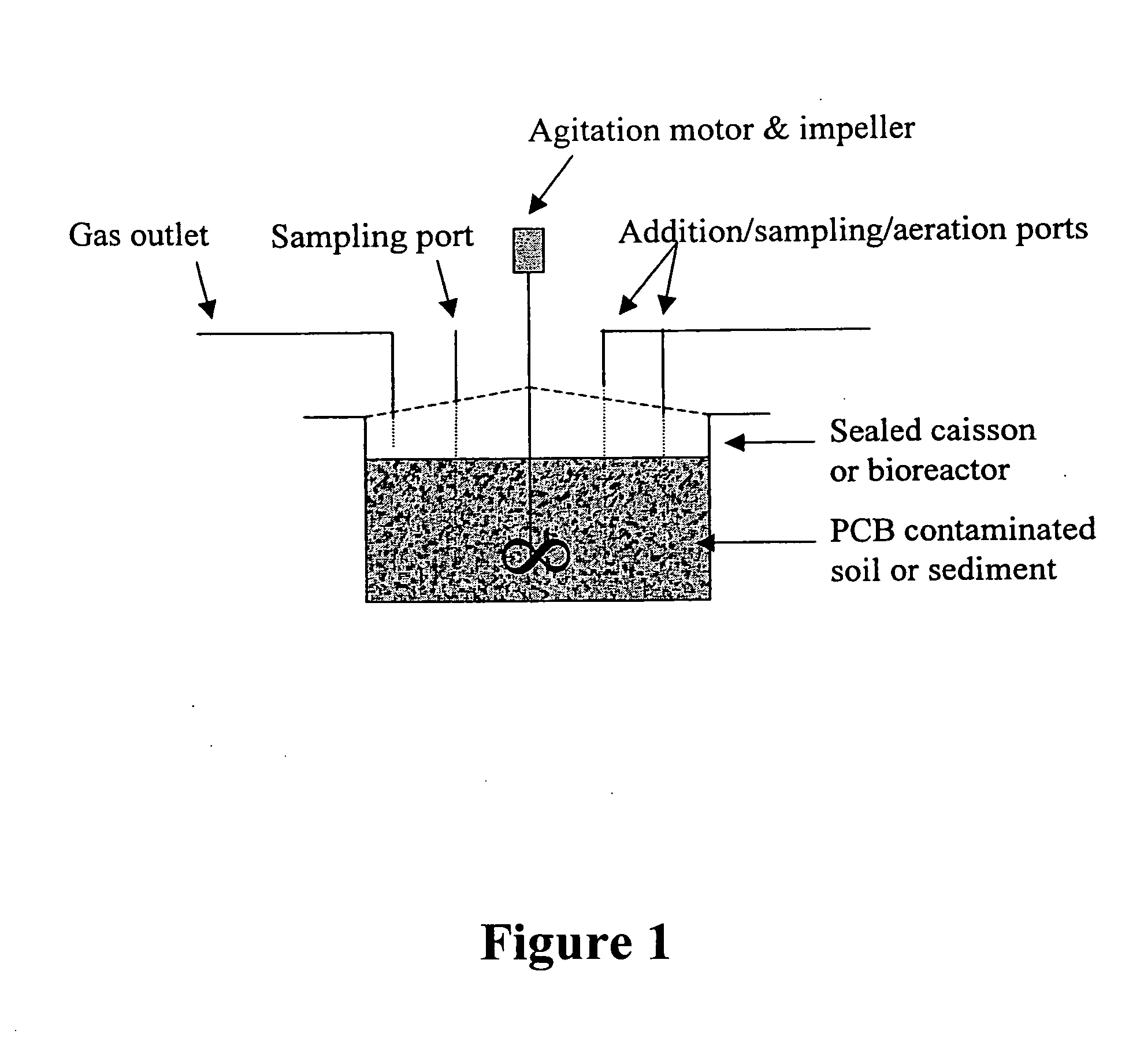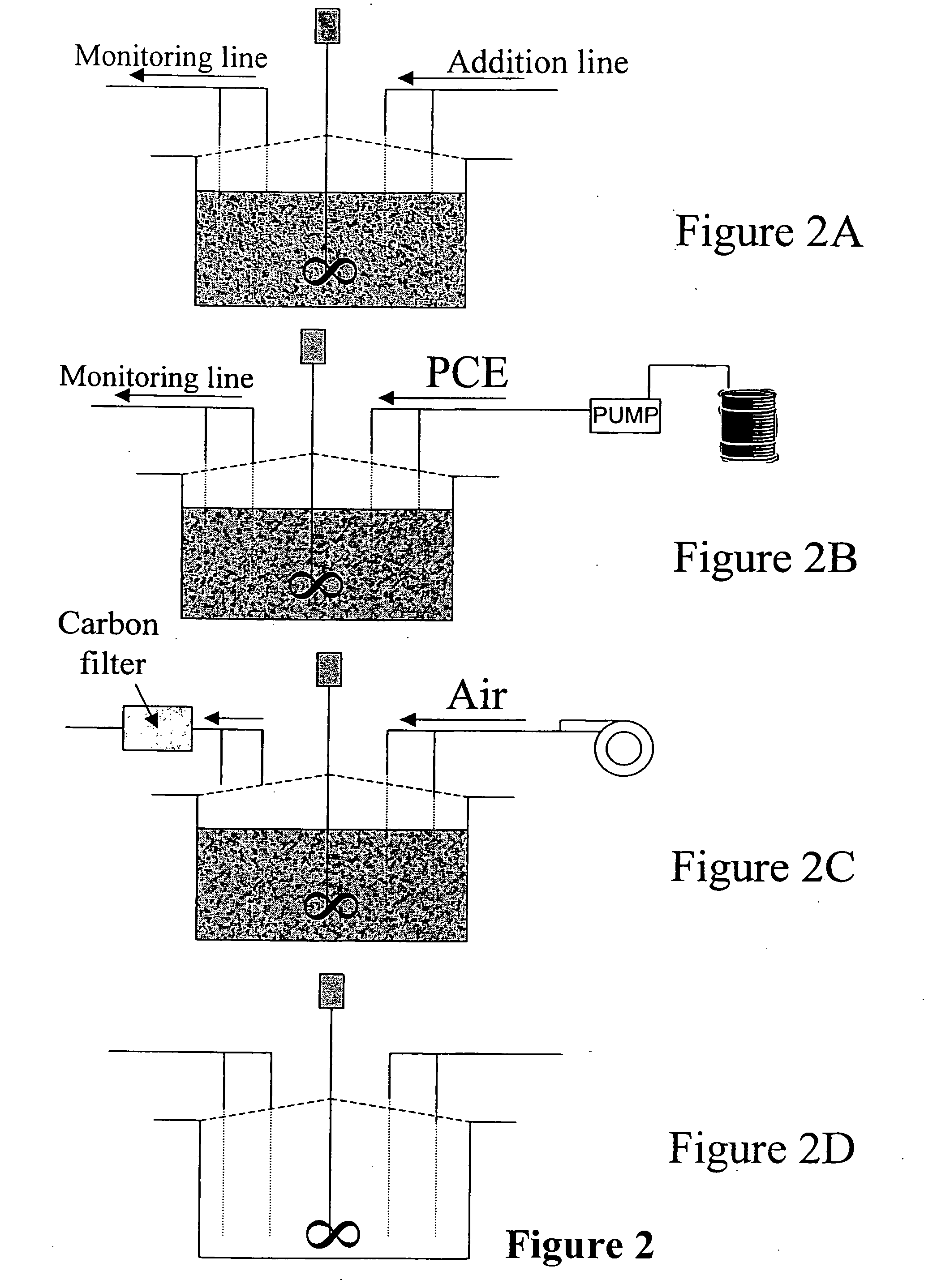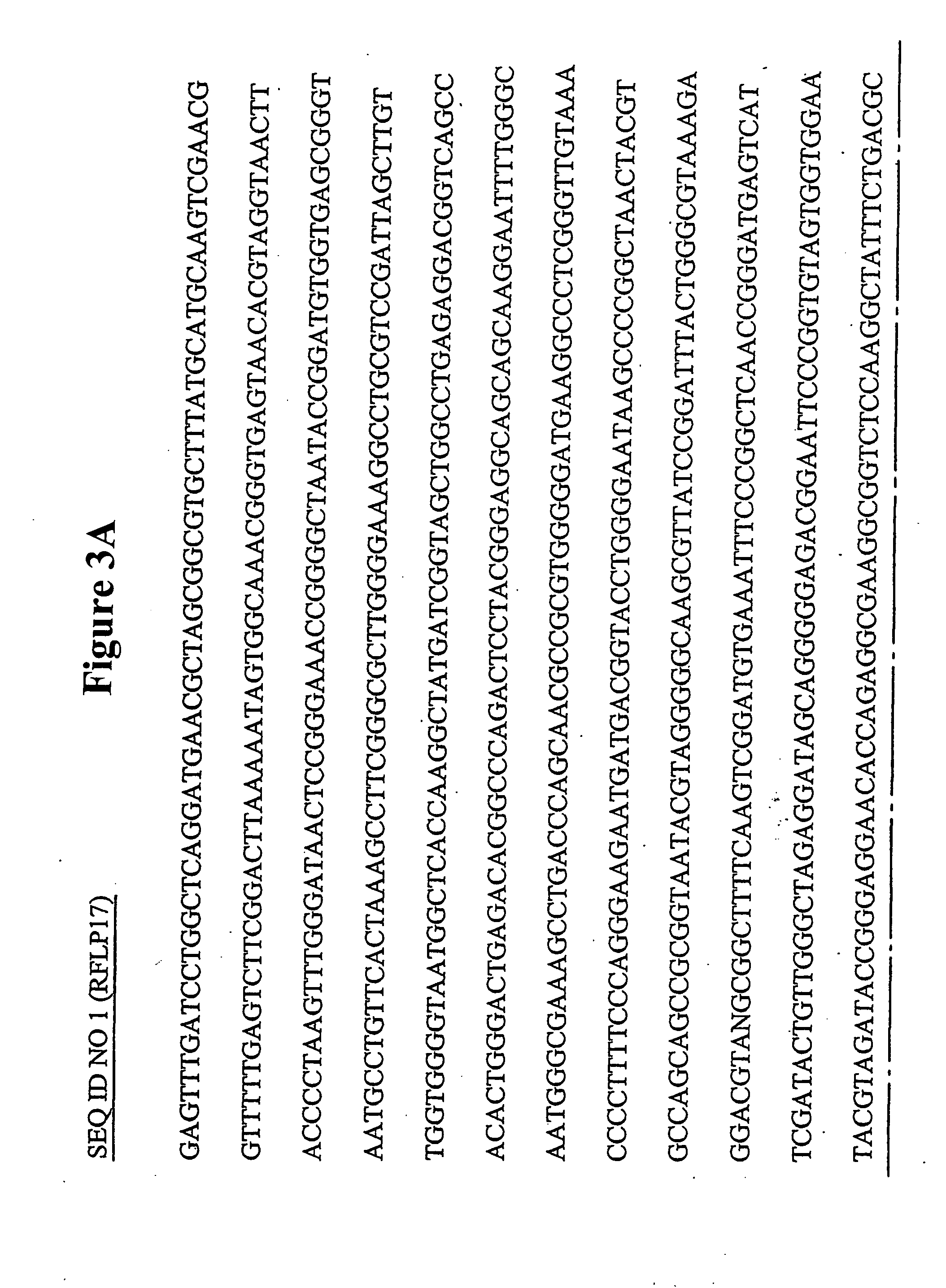Stimulation of microbial dechlorination of polychlorinated biphenyls with halogenated ethenes
a technology of halogenated ethenes and polychlorinated biphenyls, which is applied in the field of polyhalogenated ethenes, can solve the problems of frequent inaccessibility of pcbs to microorganisms, and achieve the effects of enhancing the bioavailability of pcbs, facilitating microbial dechlorination, and facilitating microbial dechlorination
- Summary
- Abstract
- Description
- Claims
- Application Information
AI Technical Summary
Benefits of technology
Problems solved by technology
Method used
Image
Examples
example 1
[0064] Tetrachloroethene is used to stimulate the growth and dechlorinating activity of PCB dechlorinating bacteria in a contaminated soil or sediment. Due to the volatility of the tetrachloroethene, tetrachloroethene works best when added to a closed system. For contaminated sediments, such a closed system comprises a caisson that is lowered into the sediment of a lake, river, pond or harbor. If needed, the bottom of the caisson is closed after introduction into the sediment, with the bottom of the caisson located well below the contaminated sediment. The top is enclosed with several sampling and addition ports that extend into the sediment or aqueous headspace. An impeller shaft is run down the middle of the caisson to allow mixing of the sediment. Ports for sampling of the sediment and water are present, allowing PCB and tetrachloroethene analysis. Nutrients (energy sources and fertilizers if needed) and gasses are introduced through such sealable ports. The tetrachloroethene is ...
example 2
[0065] An alternative to an in situ caisson is a fixed or portable reactor. Dredge material or excavated soil is added to a reactor or lined impermeable basin on-site or delivered to the reactor or lined impermeable basin at an off-site location. The system remains closed, with several sampling and addition ports extending into the soil or sediment. Bulk carbon & energy sources are introduced to make the system anaerobic. Nitrogen and carbon dioxide gases are used to promote anaerobiosis. Tetrachloroethene is introduced into the system to promote PCB dechlorination and the remaining process is as described for Example 1. The system is vented through a carbon trap to capture any volatile compounds.
example 3
[0066] Tetrachloroethene is used to develop cell material for PCB dechlorination. PCB dechlorination species are mass cultured in a closed bioreactor using tetrachloroethene as a substrate. Since tetrachloroethene is partially soluble in water, more substrate is available to the culture. Tetrachloroethene degradation is monitored by gas chromatography while tetrachloroethene is added to the culture as it becomes depleted, with either continuous or batch additions of tetrachloroethene. Tetrachloroethene is added at a concentration sufficient to maintain the growth of PCB dechlorinating bacteria. Once the culture has attained maximum cell density, residual tetrachloroethene and its intermediates are purged from the system with nitrogen. The cells are then harvested using conventional continuous centrifugation or filtration methods. Concentrated cell material is diluted in a buffer and then used as an inoculum in PCB treatment systems. Preferably the polyhalogenated ethane is tetrachlo...
PUM
 Login to View More
Login to View More Abstract
Description
Claims
Application Information
 Login to View More
Login to View More - R&D
- Intellectual Property
- Life Sciences
- Materials
- Tech Scout
- Unparalleled Data Quality
- Higher Quality Content
- 60% Fewer Hallucinations
Browse by: Latest US Patents, China's latest patents, Technical Efficacy Thesaurus, Application Domain, Technology Topic, Popular Technical Reports.
© 2025 PatSnap. All rights reserved.Legal|Privacy policy|Modern Slavery Act Transparency Statement|Sitemap|About US| Contact US: help@patsnap.com



